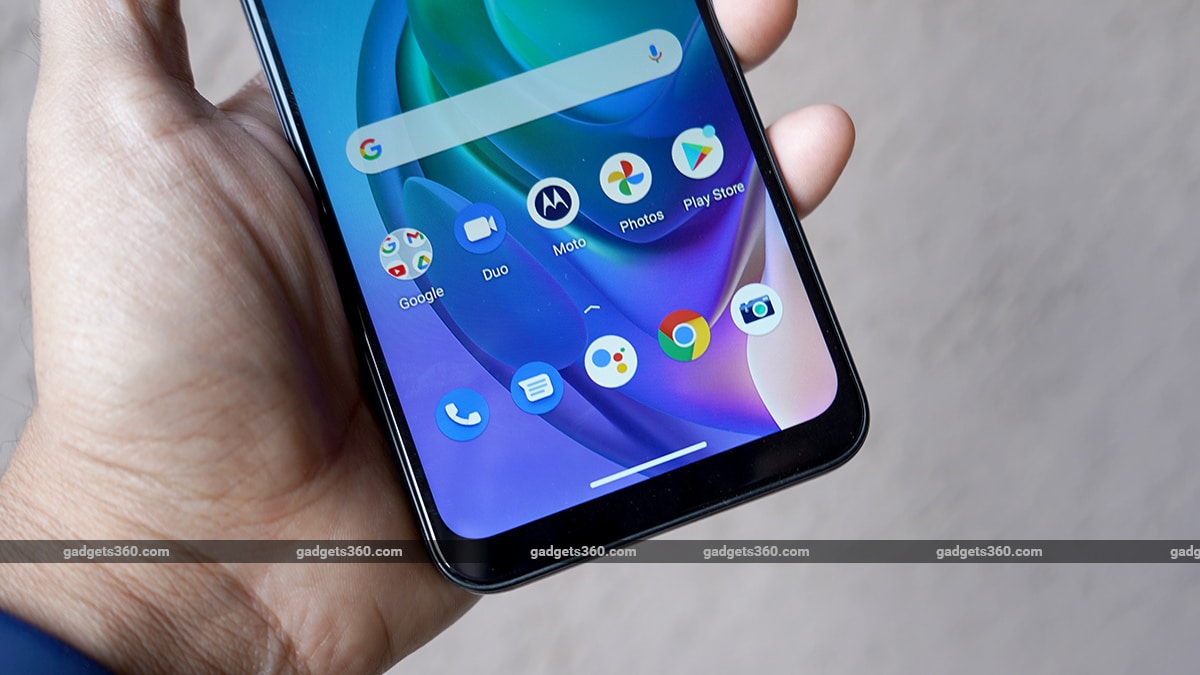Moto G10 Power Review: A Battery That Refuses to Quit
The Moto G10 Power is a new big-battery smartphone from Motorola, priced just on the cusp of Rs. 10,000. Smartphones at this price are usually a bit underpowered and not very feature-rich, however Motorola wants to change that perception. In many ways, you could think of this as the next step up from the Moto E7 Plus (Review). Even though it’s from a different series, the G10 Power uses the same guts as the E7 Plus, but with added features at the exact same price.
The sole configuration, with 4GB of RAM and 64GB of storage, is priced at Rs. 9,999 in India. It’s time to find out if the Moto G10 Power is truly better value than the Moto E7 Plus.
Moto G10 Power design
The design of a budget phone is usually a low priority for manufacturers, but I think Motorola has done a decent job with the Moto G10 Power. It certainly looks much better than the Moto E7 Plus thanks to the diagonal 3D texture on the back, similar to the design of the Realme Narzo 30A (Review). The body is built entirely of plastic but it feels sturdy. The buttons aren’t too clicky and the Google Assistant button is a bit out of reach, which is something I couldn’t get used to throughout the week-long review period.
Motorola has kept the headphone jack, which is nice. I’m also glad to see a USB Type-C port here. The Aurora Grey colour unit that I’m testing hides fingerprints well, so it’s not too hard to maintain a pristine look. The rear fingerprint sensor doesn’t miss a beat but the unlocking process is a bit slow. Face recognition is much slower, and so I never ended up using it.
I like the rear camera module design of the Moto G10 Power. It doesn’t protrude too much and you get a total of four sensors, which is not often seen at this price. On the other hand, the HD+ display looks unmistakably low-budget, with jagged edges visible on icons and slight colour banding in some gradients in photos. Viewing angles aren’t the best either. Initially, I did find the brightness to be inadequate, however this display is still very legible even under direct sunlight.

The Moto G10 Power has an interesting design on its back, which helps it stand out a bit
Moto G10 Power specifications and software
The Moto G10 Power uses Qualcomm’s Snapdragon 460 SoC, which is modestly powerful but certainly not the best in this segment. Realme’s recent Narzo 30A has a MediaTek Helio G85, which offers more power at a lower price. However, Motorola does make up for this in a way by offering an official IP52 rating for water resistance, and dual-band Wi-Fi. The Moto G10 Power does support plenty of satellite navigation systems and has all the basic sensors, although it’s missing a compass.
Motorola has offered a clean Android experience for ages now, and this continues. The Moto G10 Power runs a near-stock version of Android 11 with only a few tweaks along the way. There’s an ‘Adaptive Performance’ toggle in the Settings app, which claims to help launch your frequently used apps quicker. The Moto app offers a number of useful shortcuts and gestures which we’re used to seeing from Motorola.

The Moto G10 Power has a mediocre display with thick bezels
Moto G10 Power performance and battery life
There’s no way to say this gently, but the fact is that Android 11 simply doesn’t feel very snappy on the Moto G10 Power. You need to be a little patient when opening system menus or switching between apps due to the underpowered SoC. Once you get used to this, it’s not so bad. Benchmark numbers are a bit weak as expected, with AnTuTu returning just 1,47,290 points.
The lack of bloatware is always refreshing and I didn’t encounter any ads or spammy notifications during my week-long review period. Motorola has struck the best balance, in my opinion, between offering a stock Android experience and adding creature comforts such as Gaming Mode, which I think is something HMD Global should learn from.
The Moto G10 Power doesn’t heat up during regular use, but the back gets mildly warm when gaming. Speaking of which, simple titles such as Xenowerk run just fine but heavier games such as Call of Duty: Mobile will have to be played at lower graphics settings for a decent enough gameplay experience. The single speaker gets loud and sound quality is decent. You can enable equaliser presets for the speaker too. Watching videos isn’t a great experience due to the underwhelming display, but this phone is serviceable.

The biggest selling point of the Moto G10 Power is its stellar battery life
One of the main reasons you’d pick this phone over others is its battery life, which is excellent. The 6,000mAh battery easily lasts two full days on one charge, and this is with rigorous use too. If you’re not a heavy user, you should be able to go well beyond that. Charging speed is decent considering the capacity. You can expect a roughly 54 percent charge in an hour, and charging it fully will take close to two hours. The Moto G10 Power also ran for over 25 hours in our HD video loop test.
Moto G10 Power cameras
The Moto G10 Power has a 48-megapixel main camera, an 8-megapixel ultra-wide camera, a 2-megapixel depth sensor, and a 2-megapixel macro camera. There’s an 8-megapixel selfie camera. The camera app is feature-rich, and you even get a Night mode for the selfie camera, Pro mode with RAW capture, and interesting creative shooting modes such as Spot Colour for stills and videos. The camera app needs a bit of a learning curve as there are a lot of menus to be explored, which can get a little confusing at first.
The primary camera is the one you’ll want to be using most often as the others aren’t quite as good. Daylight shots were decent with good HDR, details, and colours. Close-ups looked good too and thanks to minimal shutter lag, it’s possible to get sharp photos of moving objects. The ultra-wide camera is a nice addition, which was missing from the Moto E7 Plus. Image quality is slightly weaker compared to the main camera, but it’s usable under good light.

Moto G10 Power main camera sample (tap to see larger image)

Moto G10 Power ultra-wide camera sample (tap to see larger image)

Moto G10 Power close-up camera sample (tap to see larger image)
The depth sensor seems to work well, as Portrait shots look good, with a pleasing depth of field. The macro camera is sub-par even under good light.
In low light, the main camera captures much softer details. Night mode helps fix the exposure but doesn’t do much to improve detail. You can’t use Night mode with the ultra-wide camera, so the image quality is very poor in the dark.

Moto G10 Power Night mode camera sample (tap to see larger image)

Moto G10 Power portrait selfie sample (tap to see larger image)
The front camera works well during the day for all the shooting modes but low-light quality is very weak. Night mode is not much help here either. The Moto G10 Power can shoot up to 1080p 60fps video with its main camera. There’s stabilisation for the main and ultra-wide cameras, provided you’re recording at 30fps. Video quality is good in daylight but there’s a noticeable drop in quality in low light.
Verdict
The Moto G10 Power has a lot to offer at Rs. 9,999. It looks good, and has excellent battery life, fast charging, and stock Android. The main camera is quite competent during the day, but photo and video capabilities are quite basic. Some aspects of this phone that could have been better are the display and low-light camera performance.
Compared to the Moto E7 Plus, the Moto G10 Power offers better battery life and quicker charging. However, if you’re looking for better gaming or system performance at this price level, then the Narzo 30A could be a good alternative or for a bit more, you can get the Moto G30 (Review).
Has the Redmi Note 10 Series raised the bar in the budget phone market in India? We discussed this on Orbital, our weekly technology podcast, which you can subscribe to via Apple Podcasts, Google Podcasts, or RSS, download the episode, or just hit the play button below.
Source link



